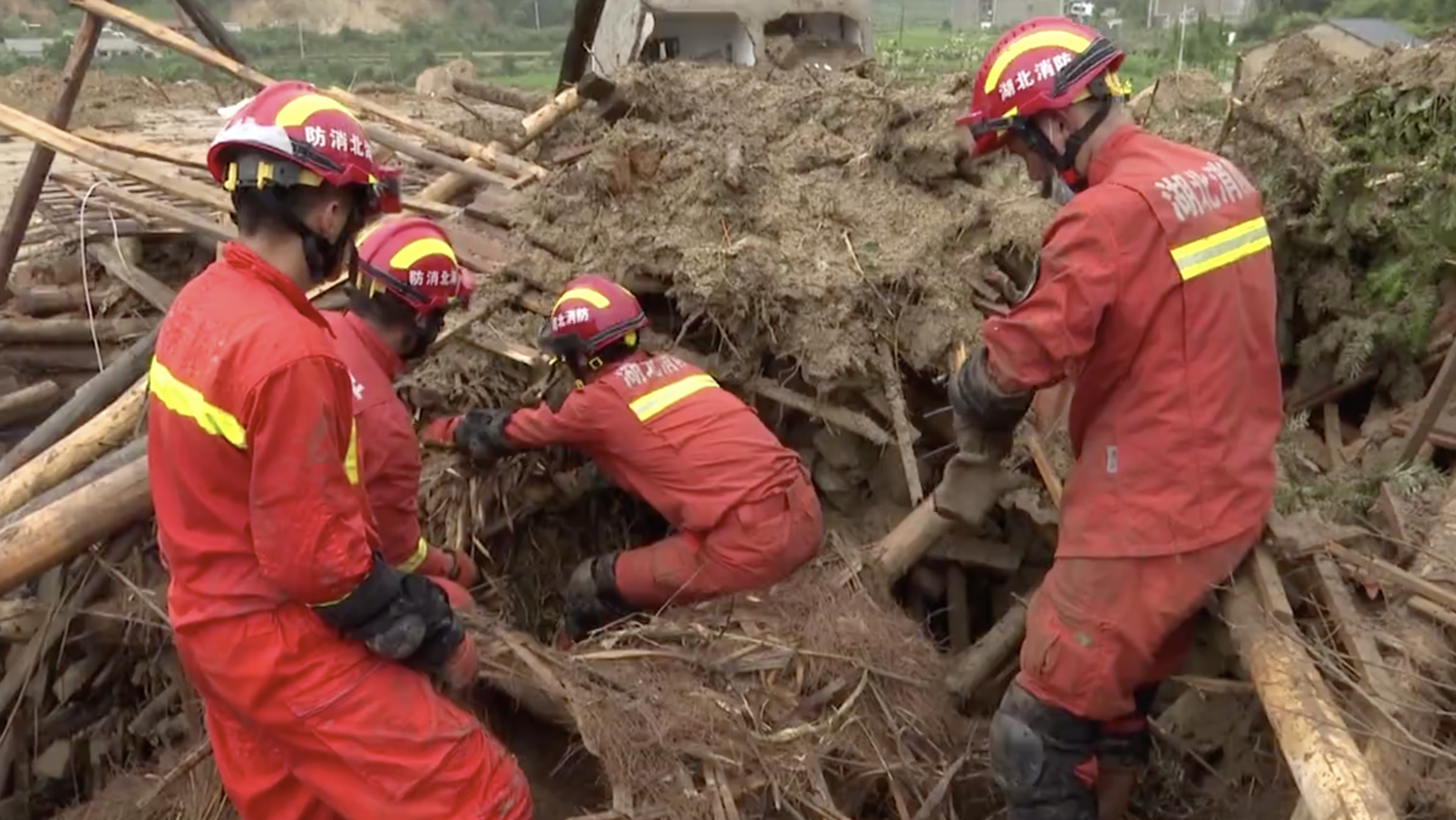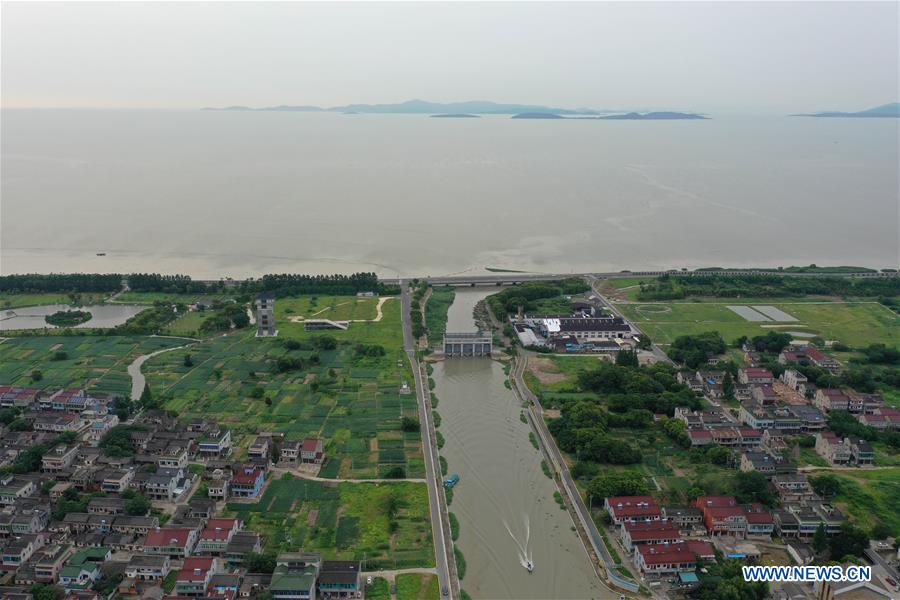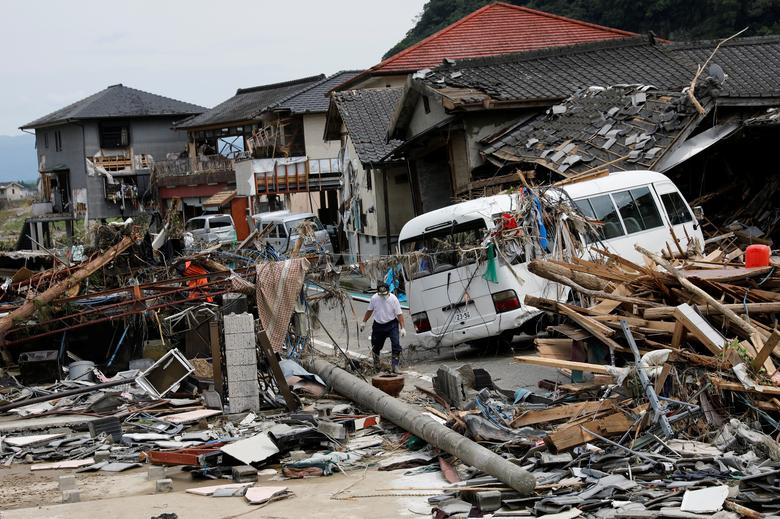00:53

The Xin'an River Reservoir, the largest flood control project in east China, opened all its nine spillways on Wednesday morning to release floodwaters. The unprecedented opening was to reduce local floods, which have ruthlessly battered large parts of south China since June.
The rain-triggered floods has affected some 2.63 million people in 11 provincial-level regions. More than 20 people were killed or remain missing after torrential downpours unleashed floods, mudslides and landslides in south China, according to a count based on local official reports.
The heavy rains also forced the relocation of about 228,000 people, destroyed over 1,300 houses and brought direct economic losses of over four billion yuan (about 566 million U.S. dollars), according to China's Ministry of Emergency Management.
00:21

Eastern and central China heavily hit
On Wednesday, local authorities in east China's Anhui and Jiangxi provinces upgraded the emergency response to level III as the the provinces saw heavy rainfall swell rivers and lakes, and the rainfalls are forecast to continue.
As of Wednesday, the floods starting from Monday had affected nearly 399,000 residents in Jiangxi, with 39,000 people relocated, according to the provincial emergency management department. A total of 21 houses collapsed in the floods, and 25,800 hectares of crops were damaged. The direct economic loss was 260 million yuan (about 37 million U.S. dollars). The provincial observatory on Wednesday renewed its orange alert for rainstorms, as incessant downpours continue to wreak havoc across vast stretches of the province.
Central China's Hubei Province, a province once badly hit by COVID-19, is forecasting heavy rains for the rest of the week. A landslide caused by heavy rainfall swept away nine people in Huangmei County on Wednesday. Torrential downpour hit the county on Wednesday morning, with precipitation exceeding 200 mm. The province activated a Grade IV emergency response for natural disaster relief starting Tuesday noon.
Severe flooding caused by torrential rain disrupted the national college entrance examination in many counties earlier this week, as most of the 2,000-plus examinees were unable to reach their exam sites on time in Anhui.

Aerial photo taken on July 7, 2020 shows a water gate connecting Taihu Lake with Huanlou Village of Wuxing District, Huzhou City, east China's Zhejiang Province. /Xinhua
Aerial photo taken on July 7, 2020 shows a water gate connecting Taihu Lake with Huanlou Village of Wuxing District, Huzhou City, east China's Zhejiang Province. /Xinhua
Timely response along Yangtze river
China's State Flood Control and Drought Relief Headquarters upgraded the emergency response for flood control from level IV to level III on Tuesday, as incessant downpours continued to wreak havoc across vast stretches of the country.
The headquarters and the Ministry of Emergency Management on Monday dispatched nine more work teams to various regions, including Sichuan, Chongqing, Hunan and Jiangxi. Previously, teams had been sent to assist in flood relief in Hubei and Anhui.
East China's Zhejiang Province has been ravaged by waves of concentrated rainfall for over a month, with the accumulated precipitation of the Xin'an River area reaching 924.37 mm, 131.7 percent more than the previous average during the same period as of 10 a.m. Tuesday.
However, due to heavy downpours and floods upstream in Anhui Province, the water level in the Xin'an River Reservoir in Zhejiang continued to rise. With all spillways open, the reservoir can discharge water at a rate of 7,800 cubic meters per second with the hydropower station running at full capacity. Local authorities said all residents in the lower reaches area have been evacuated before the floodwater release.
00:42

To support the rescue measures, China has allocated a total of 615 million yuan (about 87.6 million U.S. dollars) for disaster relief in regions hit by floods, the Ministry of Emergency Management (MEM) said on Wednesday.
The funds, allocated by the Ministry of Finance and the MEM, were channeled to major flood-hit provinces of Anhui, Jiangxi, Hubei, Guizhou, Guangxi Zhuang Autonomous Region and Chongqing Municipality, with 430 million yuan to be used for flood control. The remaining 185 million yuan will be used to help people affected by the disasters.
Since June, continuous downpours have lashed large parts of eastern and central China, and the waters of many rivers in the affected regions have exceeded warning levels.
Flooding and landslides around Asia
Japan continues to suffer from downpours inundating wide swathes of its southwest and central areas on Wednesday, leading to the country's weather agency issuing its highest alert level for heavy rain in areas in Gifu and Nagano prefectures before downgrading it later in the day.
According to the Japan Meteorological Agency (JMA), the turbulent weather front moved from the southwest island of Kyushu where it has already wreaked havoc on numerous prefectures there, to the central Japan region of Tokai.

Pounding rain batters large areas of Japan's main island, swelling more rivers, triggering mudslides and destroying houses and roads. /Reuters
Pounding rain batters large areas of Japan's main island, swelling more rivers, triggering mudslides and destroying houses and roads. /Reuters
More flooding and landslides were expected on Thursday as the rains moved to central regions. Local authorities issued emergency warnings as reports of swollen rivers, mudslides and damaged homes and roads in two mountainous central prefectures.
In India, the overall situation has improved since Sunday, but as many as 17 districts in Indian state Assam continues to see heavy floods. The water-related floods in the regions have impacted around 680,000 people, among which around 5000 people are taking shelter.
The rain eased on Wednesday. The Saurashtra and Kutch areas remain deficient during the monsoon rainfall, despite the deluge.
Cover image via Xinhua
(With input from agencies)